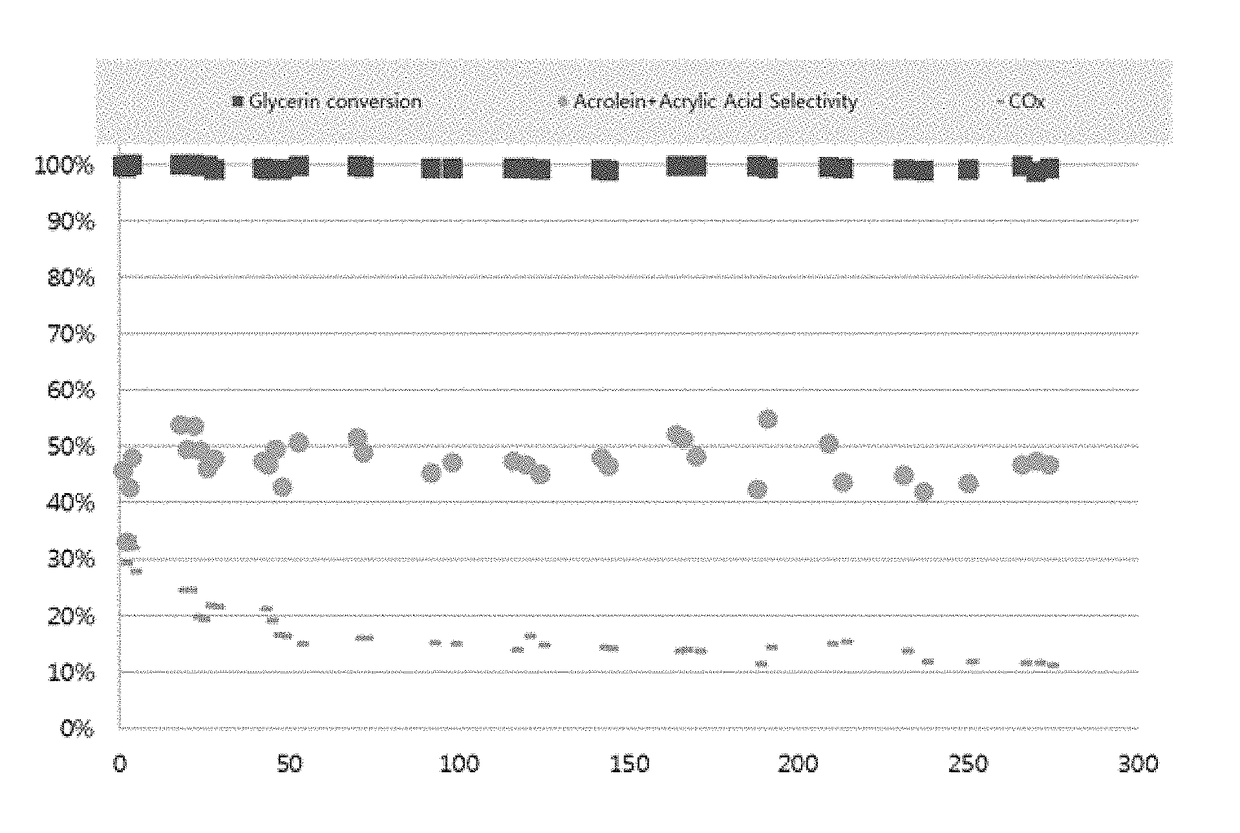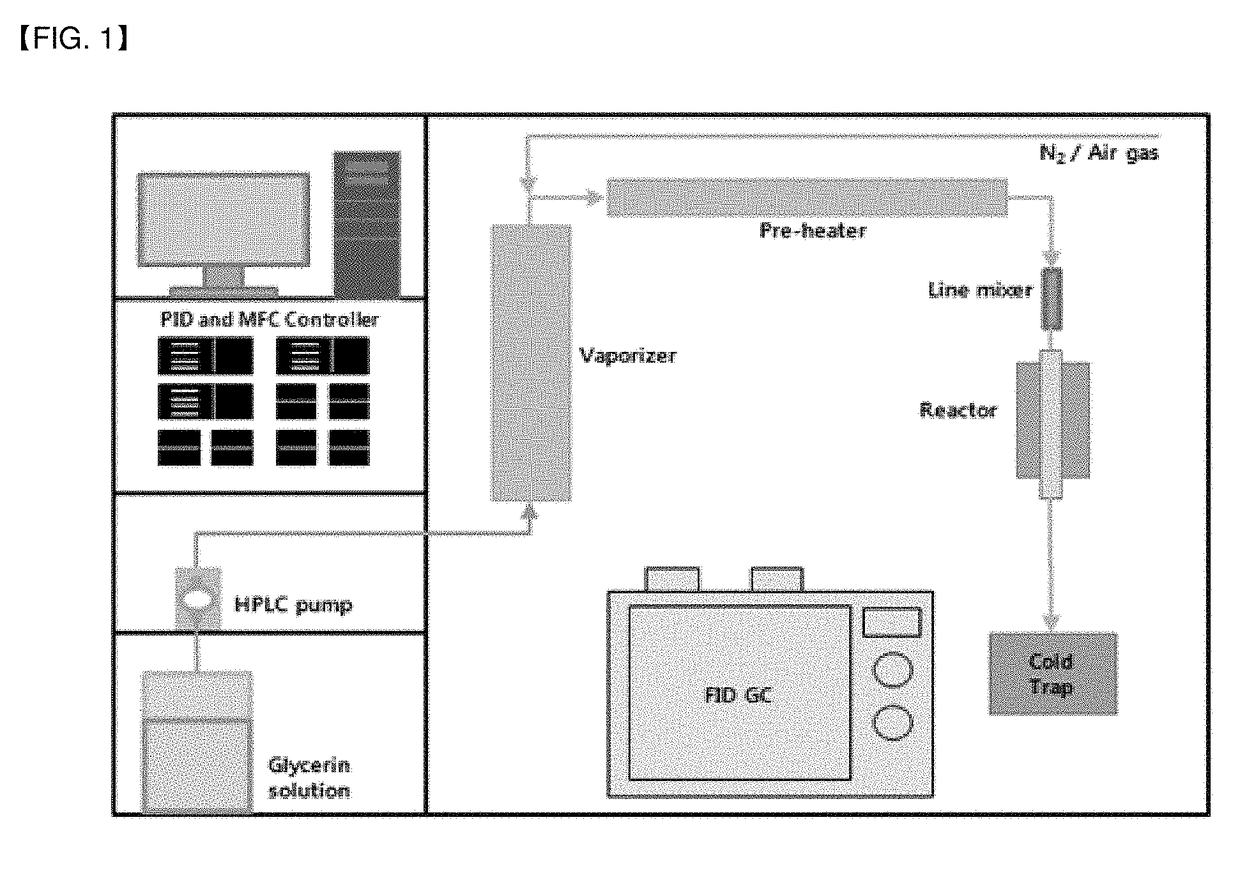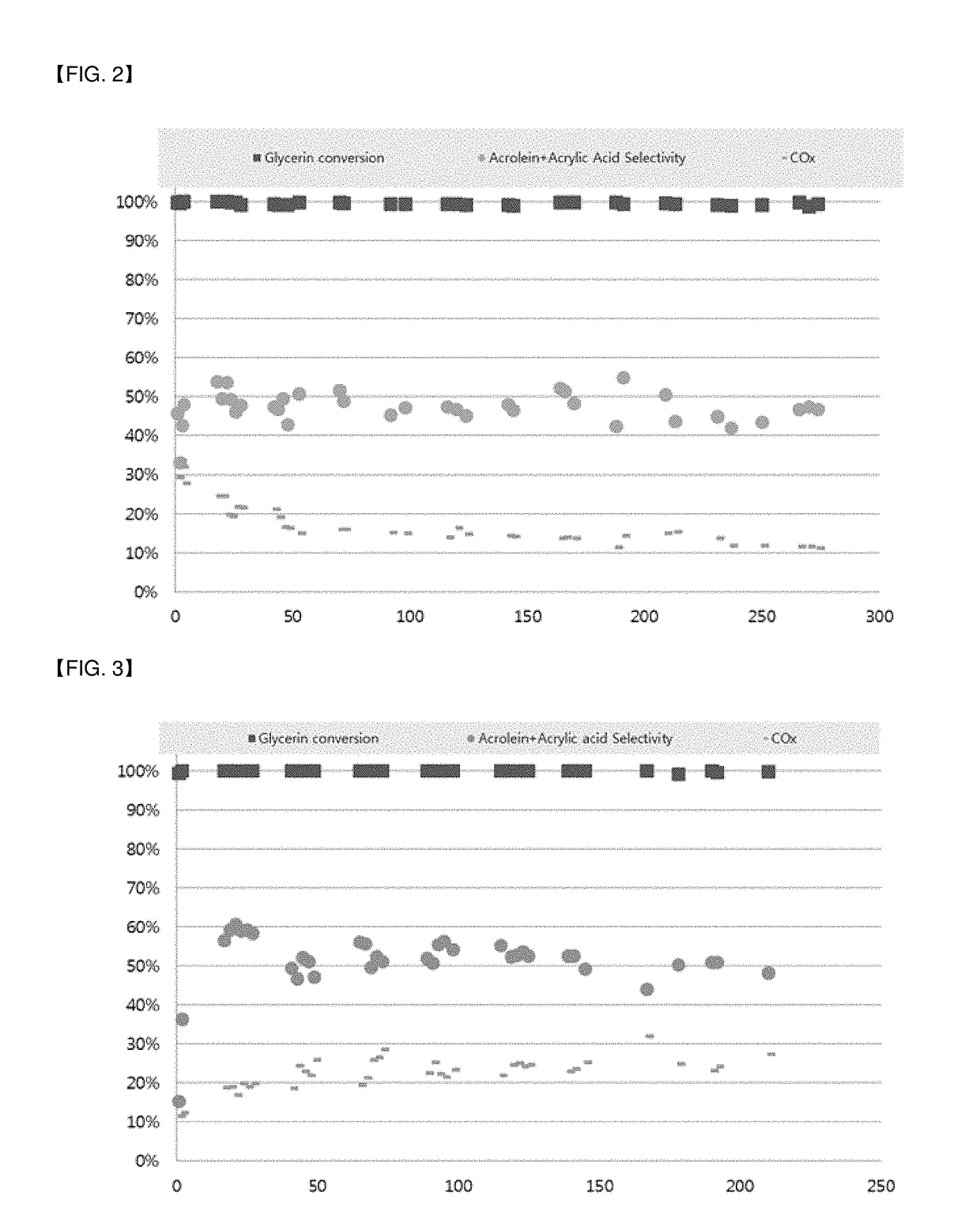Catalyst for dehydration of glycerin, preparation method thereof, and production method of acrolein using the catalyst (as amended)
- Summary
- Abstract
- Description
- Claims
- Application Information
AI Technical Summary
Benefits of technology
Problems solved by technology
Method used
Image
Examples
preparation example 1
lyst for Dehydration of Glycerin
[0069]An aqueous solution was prepared by adding 12.208 g of ZrOCl2, a zirconium precursor, to 150 mL of distilled water. 0.225 g of Zn(NO3)2.6H2O, a zinc precursor, and 0.933 g of H26N6O40W12, a tungsten precursor, were added to the aqueous solution and the mixture was stirred for about 30 min to 1 h. After preparing another aqueous solution by adding 8.714 g of NH4H2PO4, a phosphorus precursor compound, to 150 mL of distilled water, the phosphorus precursor aqueous solution was added to the zirconium aqueous solution prepared above and the mixture was stirred overnight at a temperature of about 95° C.
[0070]Thereafter, the precipitate settled from the aqueous solution was washed with ethanol, dried at 100° C. for 12 h, and calcined at 700° C. for 6 h to obtain ZrZn0.02W0.1P2HxOy, a catalyst for dehydration of glycerin.
preparation example 2
lyst for Dehydration of Glycerin
[0071]An aqueous solution was prepared by adding 10.986 g of ZrOCl2, a zirconium precursor, to 150 mL of distilled water. 1.54 g of Fe(NO3)3.9H2O, an iron precursor, and 0.933 g of H26N6O40W12, a tungsten precursor, were added to the aqueous solution and the mixture was stirred for about 30 min to 1 h. After preparing another aqueous solution by adding 8.714 g of NH4H2PO4, a phosphorus precursor compound, to 150 mL of distilled water, the phosphorus precursor aqueous solution was added to the zirconium aqueous solution prepared above and the mixture was stirred overnight at a temperature of about 95° C.
[0072]Thereafter, Zr0.9Fe0.1W0.1P2HxOy, a catalyst for dehydration of glycerin, was obtained according to the same method as in Preparation Example 1.
preparation example 3
lyst for Dehydration of Glycerin
[0073]Zr0.9V0.1W0.1P2HxOy, a catalyst for dehydration of glycerin, was obtained according to the same method as in Preparation Example 2, except that 0.448 g of NH4VO3, a vanadium precursor, was used instead of the iron precursor.
PUM
| Property | Measurement | Unit |
|---|---|---|
| Temperature | aaaaa | aaaaa |
| Temperature | aaaaa | aaaaa |
| Time | aaaaa | aaaaa |
Abstract
Description
Claims
Application Information
 Login to view more
Login to view more - R&D Engineer
- R&D Manager
- IP Professional
- Industry Leading Data Capabilities
- Powerful AI technology
- Patent DNA Extraction
Browse by: Latest US Patents, China's latest patents, Technical Efficacy Thesaurus, Application Domain, Technology Topic.
© 2024 PatSnap. All rights reserved.Legal|Privacy policy|Modern Slavery Act Transparency Statement|Sitemap



